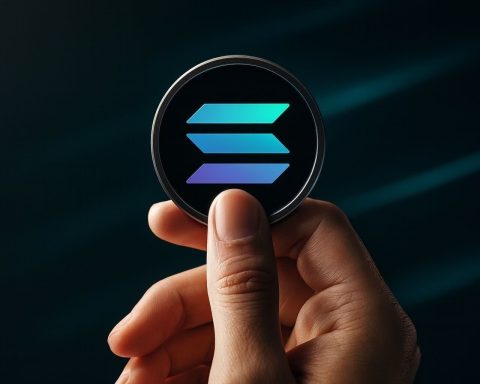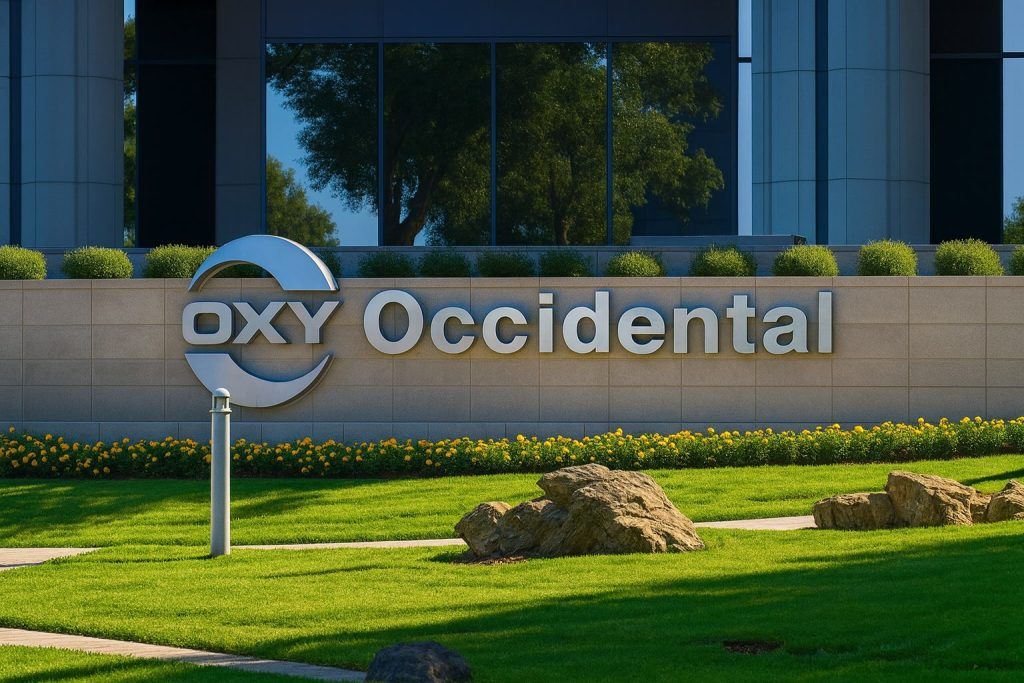- Short interest surge: The actively managed John Hancock Fundamental All Cap Core ETF (JHAC) experienced an 8 600 % surge in short interest between late August and mid‑September 2025, jumping from 100 shares to 8 700 shares [1]. On average it would take around 3.5 trading days to cover existing short positions [2].
- Non‑transparent structure: JHAC uses Fidelity’s non‑transparent active ETF model and discloses a “tracking basket” rather than its full holdings daily, which reduces front‑running risk but can increase trading costs and lead to price deviations from net asset value [3].
- Fund performance: As of October 2025 the fund traded around $15.39 per share. For calendar year 2025 its price movement was roughly 4.35 % and in 2024 it gained 22.71 % [4].
- Closed‑end fund distributions: John Hancock’s closed‑end funds — HPI, HPF, HPS, PDT and HTD — maintained monthly distribution rates in October 2025. For example, HPI and HPF paid $0.1235 per share, HPS $0.1100, PDT $0.0825 and HTD $0.1580, with annualised distribution rates between 7.42 % and 8.80 % [5].
- Return‑of‑capital component: The Premium Dividend Fund (PDT) and Tax‑Advantaged Dividend Income Fund (HTD) use managed distribution plans. The September 2025 distribution for PDT comprised 84 % net investment income and 16 % return of capital, while HTD’s distribution was 81 % net investment income and 19 % return of capital [6] [7].
- Forward‑looking caution: John Hancock emphasises that distribution amounts may not reflect investment performance and could include return of capital; investors should consult tax notices and consider whether the funds are suitable for their objectives [8].
Background: John Hancock’s Active ETF Experiment
John Hancock Investment Management, the asset‑management arm of Manulife, is known for its multi‑manager approach. On 2 November 2023 the firm expanded its ETF lineup by launching two actively managed funds, including the Fundamental All Cap Core ETF (JHAC). According to John Hancock, JHAC is its first semi‑transparent ETF: it publishes a tracking basket of securities rather than disclosing full holdings daily, allowing managers to hide proprietary strategies and reduce front‑running risk [9].
The fund is managed by Emory W. (Sandy) Sanders Jr., CFA and Jonathan T. White, CFA, co‑leaders of the U.S. Core Value Equity Team at Manulife Investment Management [10]. Their mandate is to pursue long‑term capital appreciation by investing in U.S. companies across the market‑capitalisation spectrum via a bottom‑up fundamental approach [11]. This bottom‑up process distinguishes JHAC from passive index ETFs, but the non‑transparent model means investors must accept potential deviations from net asset value and higher trading costs. John Hancock warns that an active market for JHAC shares may not develop, and that investing in large‑, mid‑ and small‑company stocks carries volatility [12].
Short‑Interest Spike: Bearish or Arbitrage?
In mid‑September 2025, the market took notice when short interest in JHAC skyrocketed from 100 shares to 8 700 shares [13]. At the time, the fund’s average trading volume was around 2 500 shares, translating to a short‑interest ratio of roughly 3.5 days [14]. MarketBeat notes that a ratio between 1 and 4 often signals positive sentiment, but a sharp rise in short interest can indicate bearish expectations or hedging activity. Although small in absolute terms, the 8 600 % increase suggests that some traders were betting on a pullback after JHAC’s strong 2024 performance.
The fund’s closing price in early October 2025 was $15.39, near its 52‑week high of $15.60 and well above its 52‑week low of $11.64 [15]. The price has risen about 4.35 % in 2025 and 22.71 % in 2024 [16], reflecting the market’s appetite for actively managed equity exposure. Observers note that the non‑transparent structure may be appealing because it can shield managers’ trading from front‑running, but it also means investors have less insight into underlying holdings, which may partly explain the volatility in short‑interest statistics.
How the Semi‑Transparent Model Works
Traditional ETFs disclose their portfolios daily, allowing authorized participants to create and redeem shares through an arbitrage mechanism that keeps prices in line with net asset values. Semi‑transparent ETFs like JHAC instead publish a “tracking basket” of securities designed to closely track the fund’s actual holdings. The proxy basket is updated daily and used for creation and redemption orders. John Hancock notes that this structure can reduce the risk of predatory trading but may also result in wider bid‑ask spreads and pricing gaps because market makers do not have perfect information [17].
The firm emphasises that the strategy is suited to investors who want the potential alpha of active management while maintaining the tax efficiency and liquidity of an ETF. However, the structure carries unique risks: limited transparency can lead to arbitrage inefficiencies, and there is a risk that the active market for the shares may not develop or may become illiquid [18]. This is important for investors considering short positions because borrow costs and liquidity could be affected.
Closed‑End Funds: A Distribution Bonanza
John Hancock also manages several closed‑end funds (CEFs) that pay monthly distributions. In October 2025 the company announced that John Hancock Preferred Income Fund (HPI), John Hancock Preferred Income Fund II (HPF), John Hancock Preferred Income Fund III (HPS), John Hancock Premium Dividend Fund (PDT) and John Hancock Tax‑Advantaged Dividend Income Fund (HTD) would maintain their monthly distributions [19]. The table below summarises the October 2025 payouts and annualised distribution rates:
| Fund (ticker) | October 2025 monthly distribution | Annualised distribution rate (based on share price and latest distribution) | Notes |
|---|---|---|---|
| HPI | $0.1235 per share | 8.54 % | Focuses on preferred securities; monthly distribution unchanged [20]. |
| HPF | $0.1235 per share | 8.80 % | Similar mandate to HPI, invests in preferred securities [21]. |
| HPS | $0.1100 per share | 8.55 % | Third iteration of preferred income strategy [22]. |
| PDT | $0.0825 per share | 7.42 % | Premium Dividend Fund with a managed distribution plan. September 2025 distribution was 84 % net investment income and 16 % return of capital [23]. |
| HTD | $0.1580 per share | 7.65 % | Tax‑Advantaged Dividend Income Fund; invests heavily in dividend‑paying common and preferred stocks with an after‑tax focus [24]. September 2025 distribution comprised 81 % net investment income and 19 % return of capital [25]. |
Managed Distribution Plans
The Premium Dividend Fund (PDT) and Tax‑Advantaged Dividend Income Fund (HTD) operate under managed distribution plans, which aim to provide consistent monthly payments regardless of portfolio income. Under these plans, distributions can include net investment income, net realized capital gains, or return of capital.
- For PDT, a September 2025 notice stated that the distribution of $0.0825 per share consisted of $0.0695 net investment income (84 %) and $0.0130 return of capital (16 %) [26]. The fund’s five‑year average annual total return was 10.49 %, and the annualized distribution rate was 7.08 % [27].
- HTD’s September 2025 notice showed its $0.1580 per share distribution comprised $0.1274 net investment income (81 %) and $0.0306 return of capital (19 %) [28]. Over the five years ended August 31, 2025 the fund delivered a 12.02 % average annual total return and had an annualized distribution rate of 7.31 % [29].
- CEFConnect reports that HTD’s shares traded at $24.75 in early October 2025, about 6.50 % below its $26.47 net asset value, and the fund carried 30.91 % leverage [30]. A high leverage ratio can magnify returns but also increases risk, especially when interest rates rise.
John Hancock cautions that distributions may include a return of capital, which is not necessarily a sign of poor performance. The firm posts distribution notices on its website showing the tax characteristics of each payment and urges investors not to assume that monthly distribution amounts equate to total return [31]. This transparency is critical for investors seeking reliable income because return‑of‑capital distributions reduce the fund’s basis and may have different tax implications.
Market and Expert Commentary
Steve Deroian, head of ETF product at John Hancock Investment Management, has said that the firm’s actively managed strategies “provide investors with income and capital appreciation regardless of the macro environment” [32]. He believes that investors appreciate the combination of professional portfolio management and the liquidity of an ETF. However, he also notes that semi‑transparent ETFs come with risks, including potentially higher transaction costs and less liquidity [33].
Experts outside the firm caution that while managed distribution plans can smooth out payouts, investors should scrutinise return‑of‑capital components. High distributions partly funded by returning capital can erode a fund’s net asset value over time if not offset by gains. Additionally, rising interest rates and uncertain economic conditions could pressure preferred securities and dividend‑oriented portfolios, affecting both JHAC and the closed‑end funds.
Conclusion
The John Hancock Fundamental All Cap Core ETF sits at the intersection of innovation and investor scrutiny. Its semi‑transparent structure offers the potential for active alpha while shielding trades from front‑running, but the design introduces risks that may contribute to volatility and spikes in short interest. Meanwhile, John Hancock’s closed‑end funds continue to deliver eye‑catching monthly distributions, supported primarily by net investment income but with notable return‑of‑capital components. For income‑hungry investors, the combination of consistent payouts and the potential for capital appreciation is appealing; however, understanding the underlying structures, leverage, and tax implications is essential before committing capital.
John Hancock’s message remains clear: review the funds’ investment objectives, risks, and expenses carefully; distributions do not guarantee performance; and, as with any investment, there is no substitute for due diligence.
In summary, the report highlights a dramatic 8,600% surge in short interest for the John Hancock Fundamental All Cap Core ETF (JHAC), while explaining how the fund’s semi-transparent structure both protects proprietary strategies and introduces pricing risks. It notes that JHAC delivered solid returns—about 4.35% in 2025 and 22.71% in 2024—yet cautions that the increased short activity may reflect bearish sentiment [34] [35]. The piece also underscores John Hancock’s emphasis on careful investor due diligence due to potential liquidity and transparency challenges [36].
Additionally, the report thoroughly covers the October 2025 distribution announcements for several John Hancock closed-end funds—HPI, HPF, HPS, PDT and HTD—detailing their monthly payout amounts and annualized rates [37]. It explains that managed distribution plans for PDT and HTD may include a return-of-capital component, which could erode net asset value if not offset by gains, and notes that HTD trades at a discount to net asset value while employing significant leverage [38]. Overall, it advises investors to look beyond distribution yields by understanding underlying portfolio risks, leverage and tax implications before committing funds.
References
1. www.defenseworld.net, 2. www.defenseworld.net, 3. www.johnhancock.com, 4. www.intelligentinvestor.com.au, 5. www.prnewswire.com, 6. www.stocktitan.net, 7. www.prnewswire.com, 8. www.prnewswire.com, 9. www.johnhancock.com, 10. www.johnhancock.com, 11. www.johnhancock.com, 12. www.johnhancock.com, 13. www.defenseworld.net, 14. www.defenseworld.net, 15. www.defenseworld.net, 16. www.intelligentinvestor.com.au, 17. www.johnhancock.com, 18. www.johnhancock.com, 19. www.prnewswire.com, 20. www.prnewswire.com, 21. www.prnewswire.com, 22. www.prnewswire.com, 23. www.stocktitan.net, 24. www.cefconnect.com, 25. www.prnewswire.com, 26. www.stocktitan.net, 27. www.stocktitan.net, 28. www.prnewswire.com, 29. www.prnewswire.com, 30. www.cefconnect.com, 31. www.prnewswire.com, 32. www.stocktitan.net, 33. www.stocktitan.net, 34. www.defenseworld.net, 35. www.intelligentinvestor.com.au, 36. www.johnhancock.com, 37. www.prnewswire.com, 38. www.stocktitan.net










